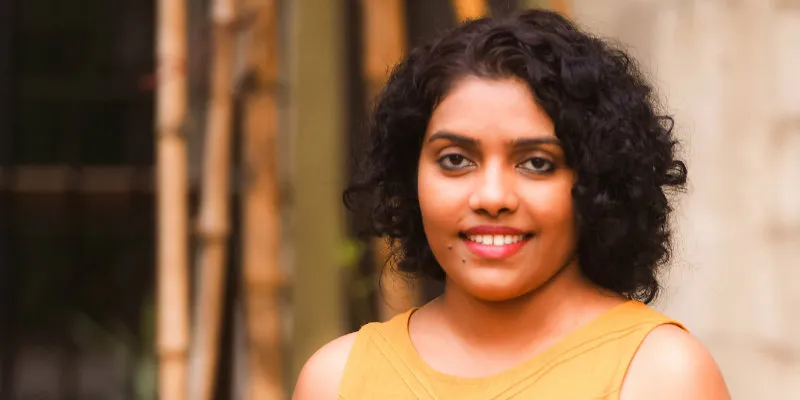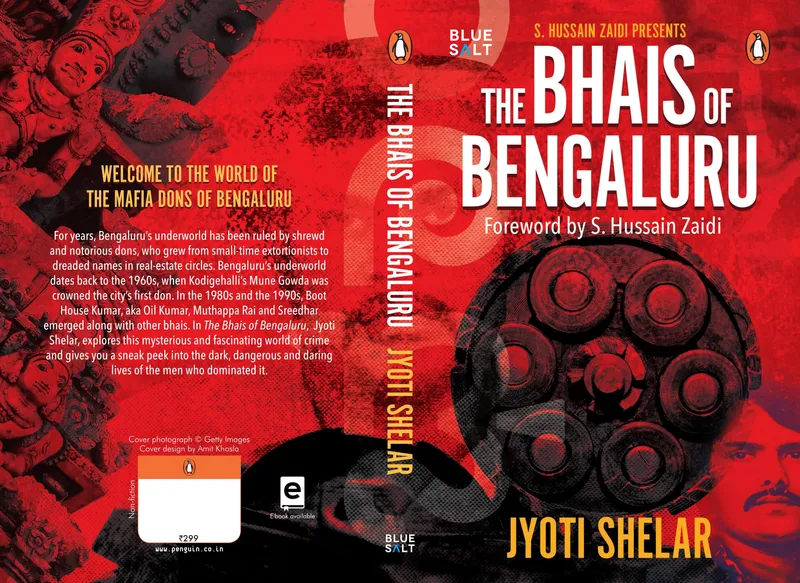Gunfights and gang wars: 'Bhais of Bengaluru' explores the dark side of India’s Silicon Valley
The book authored by journalist Jyoti Shelar explores the dark underbelly of Bengaluru, ruled by shrewd and notorious dons.
There is a different side to Bengaluru apart from its global image as India’s Silicon City with glitzy shopping malls, and an intellectual preserve.
The city has a dark underbelly – a world ruled by shrewd and notorious dons, who grew from small-time extortionists to dreaded names in real-estate circles.
Gang wars, bloody murders and hit men are not just restricted to Mumbai. Bengaluru has had its fair share of fringe groups, land barons and hoodlums spreading fear and violence.
Kodigehalli Mune Gowda was crowned the city's first 'don' back in the 1960s, but it was in the eighties and the nineties that powerhouses like Muthappa Rai, Sreedhar, 'Boot House' Kumar aka Oil Kumar, Bekkina Kannu Rajendra and Srirampura Kitty emerged.
Mumbai-based journalist Jyoti Shelar chronicles the lives of these infamous dons or bhais of Bengaluru in a soon-to-be-launched book, Bhais of Bengaluru, which explores the ‘infamous’ of the city. Jyoti has been a journalist for over 12 years and has worked in leading newspapers.
In an interview with YourStory, Jyoti speaks about her experiences in writing the book, covering crime as a reporter, and her choice of bhais for the book.

YourStory: How did the idea for the book come about?
Jyoti Shelar: My former editor in Mumbai Mirror, S Hussain Zaidi, had a few ideas in his mind, which he had discussed with me. One of the ideas was to explore the story of the Bengaluru underworld. I think I readily chose this one because I have always wanted to work in a different city and Bengaluru had been my first choice. Hussain himself wanted to chronicle the story of Bengaluru’s underworld but somehow his other projects kept him busy. Luckily for me, I got an opportunity to live and spend plenty of time in the city that I always wanted to move into.
YS: How did you choose the people profiled in the book?
JS: Every time I met someone while researching for the book, I would have some dozen names of criminals on my notepad. Initially, it was a jumble but each one of them sounded so interesting and important to me. Gradually, I had to let go of many of these characters as they did not drive my story forward. The process of narrowing down to the main people was the most tedious one. But as my research progressed, they became evident. I then went back to find out more only about the people I wanted to feature in my book. I have chosen the most notorious criminals who have shaped Bengaluru’s underworld and have featured many smaller characters who were important and added quirk to the narrative.
YS: Can you tell us about the research on the book? Any interesting anecdotes?
JS: This was my most exciting reporting assignment. Besides the dons, I have tried to throw light on various events that played a vital role in the growth of rowdyism in Bengaluru. There is a bit about the kushti culture and how the pehelwans gradually veered into the darker alleys. There’s also a bit about how ardent Rajkumar fans would go on a rampage under the guise of love for the actor and the cause of Kannada language movement. There is also a chapter on how catching hold of chain snatchers riding a motorcycle became a big achievement in the city’s policing history as the cops had never experienced such a modus operandi before.

YS: You covered crime as a journalist. Did the diverse experiences lead you into writing the book?
JS: Yes, definitely. I had no apprehensions while meeting police officials or former gangsters. That kind of ease came in because I have covered local police stations, had chai with the cops while they beat up criminals in the next room. I have closely witnessed these crime stories shape up. But I would say that it is not about the beats I have covered. What matters is my overall field reporting experience. It gave me the confidence to explore the subject for my book.
YS: We have heard of Mumbai dons but the Bengaluru underbelly is not so well-known? What did you learn about it?
JS: I would say that the Mumbai underworld has always been more popular because of Dawood Ibrahim. The Bengaluru dons were equally brutal and shrewd but they always had a plan. They played with swords and machetes but still dreamt of a white-collar life and even worked towards it. Two of the most notorious dons in Bengaluru are now living white-collar lives. This planning and intelligence take them a notch higher than the Mumbai dons, who are either on the run or behind bars.
YS: Who among these bhais did you find the most notorious?
JS: In the 1980s, Bengaluru’s underworld was ruled by MP Jayaraj, a pehelwan-turned-rowdy, who ran a small newspaper and even aspired to become a politician. I thought Jayaraj was unique in many ways. He was a notorious extortionist who ran the largest gang in the city but he maintained a Robin Hood image. He would give away plenty of his money to the needy. Jayaraj had immense hatred for the police and he would take them on through his newspaper. He was killed in 1989 in a well-planned and executed murder. This was the first time Bengaluru woke up to gunshots and Mumbai bhais were called in for the job.
YS: What kind of response do you anticipate for the book?
JS: I expect to see a surprise. Bengaluru is associated mostly with the IT sector. It will be interesting to see how people react to the city’s notorious side, especially Bengalureans. Hussain who has been the driving force behind this book feels that it will be to Bengaluru what Dongri to Dubai is for Mumbai. I hope to see a similar response.
YS: What are your favourite crime books, authors and why?
JS: Hussain Zaidi’s Black Friday is my all-time favourite. The way it chronicles the planning and execution of the 1993 serial bomb blasts in Mumbai is stunning. While working on my book, I closely followed Hussain’s Dongri to Dubai and Mafia Queens. These books were like my guides.







